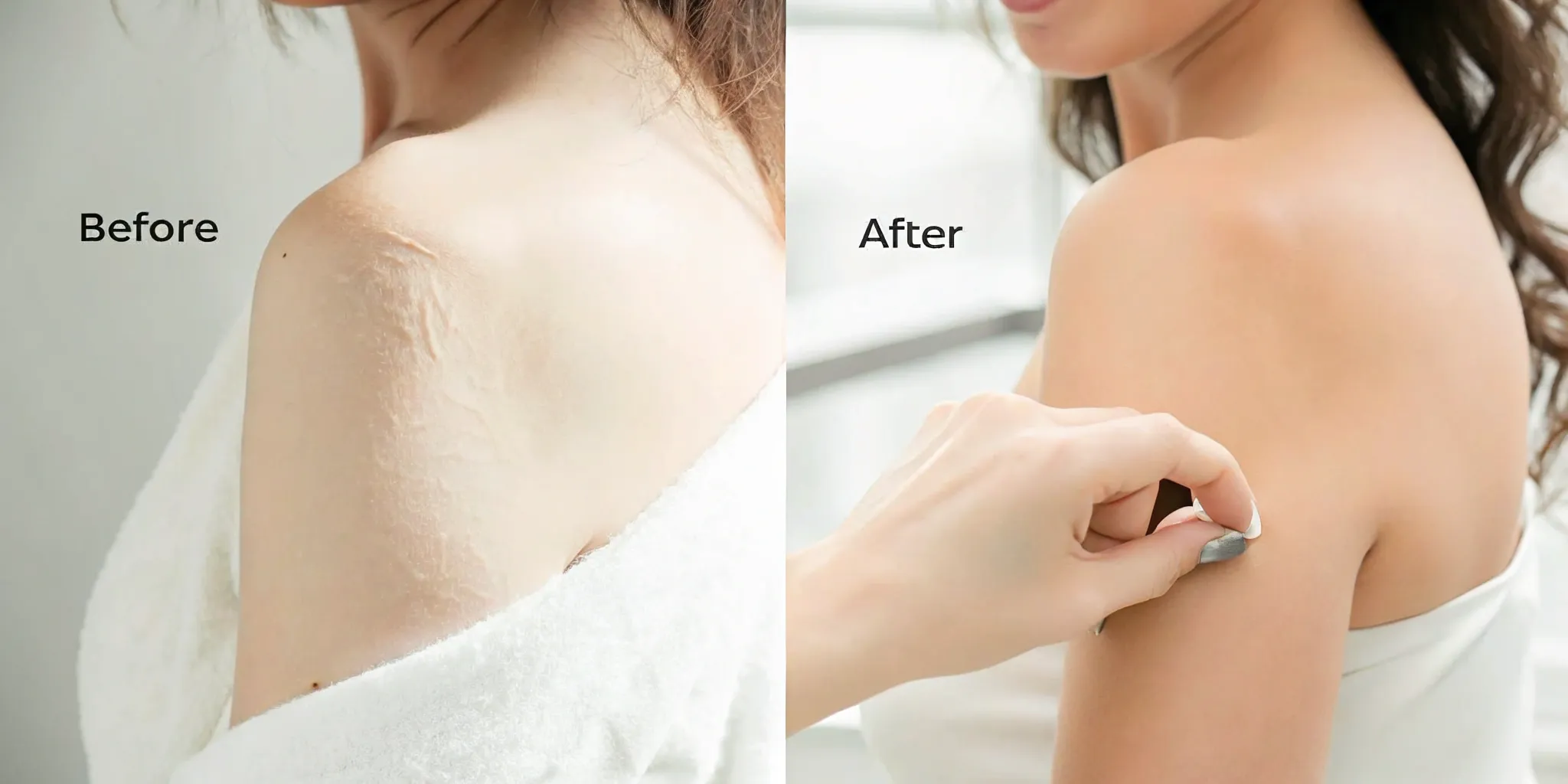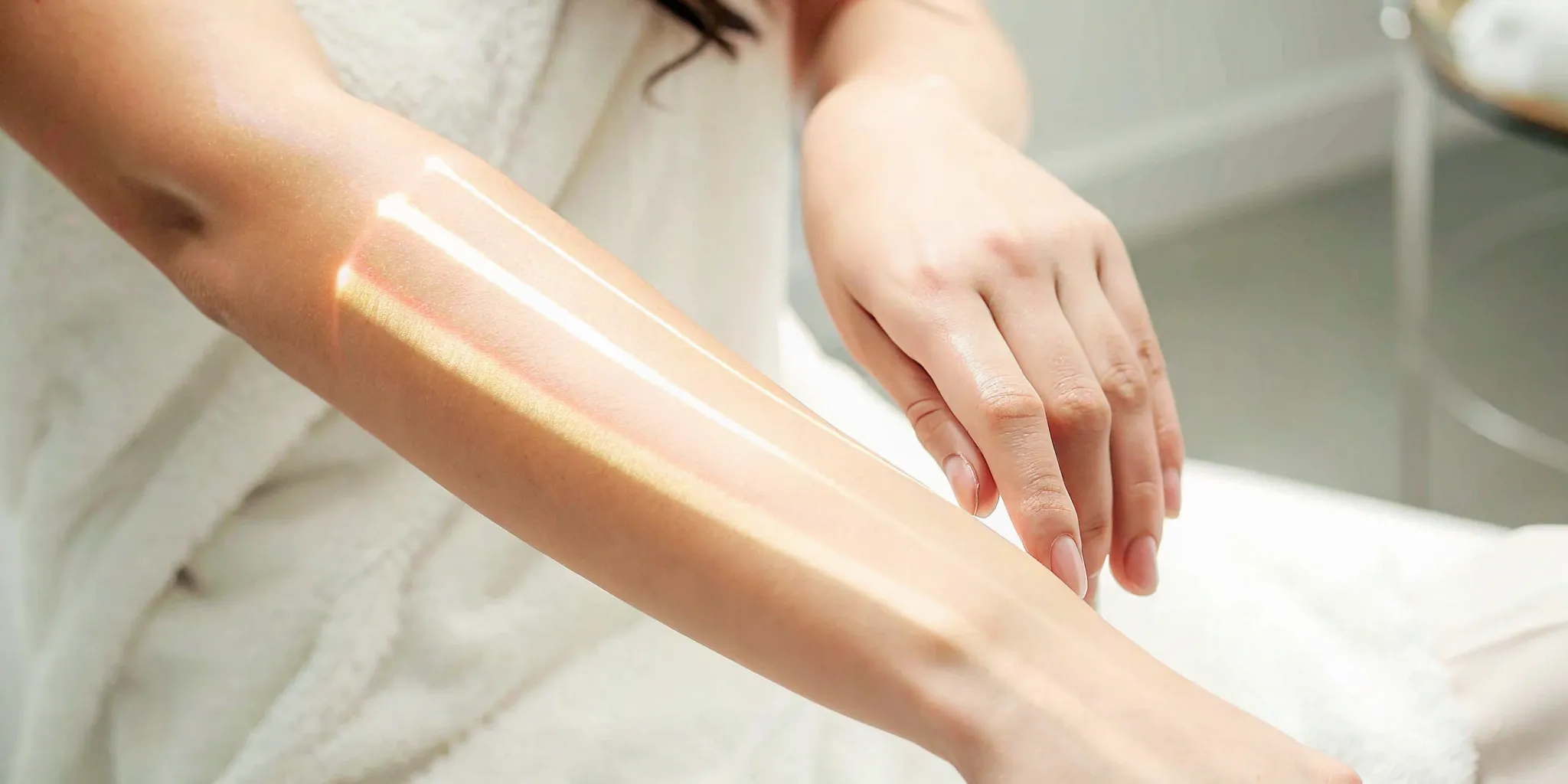The journey to a slimmer waistline often feels like a battle against your own body, but it doesn’t have to be. When you understand the science behind why your body stores fat—especially in the abdominal area—you can start working with it, not against it. Factors like hormones, particularly cortisol, play a significant role that diet and exercise alone can’t always address. We’ll break down the science into simple, actionable steps. This guide will empower you with the knowledge for effective belly fat reduction, helping you create a smart and sustainable plan that is tailored to how your body actually functions.
Key Takeaways
- Prioritize Health Over Aesthetics: The most significant reason to reduce belly fat is to decrease visceral fat—the deep, internal fat linked to health risks. Focusing on your long-term well-being, not just your reflection, is the most powerful motivation for change.
- Combine Smart Nutrition and Full-Body Exercise: You can’t target fat loss in one area. The most effective strategy is pairing a diet rich in protein, fiber, and healthy fats with a consistent fitness routine that includes cardio, strength training, and HIIT.
- Master Your Daily Habits for Lasting Success: Your lifestyle is the foundation of your results. Prioritizing 7+ hours of sleep, managing stress, and staying hydrated are non-negotiable habits that regulate hormones and support your metabolism, making your diet and exercise efforts more effective.
What Is Belly Fat? (And Why It Matters)
Let’s talk about belly fat. For many of us, it’s a source of frustration when we’re getting dressed, but its impact goes far beyond how our clothes fit. Understanding what belly fat is and why it matters is the first step toward creating a healthier, more confident you. It’s not just about aesthetics; it’s about your long-term well-being. Knowing the difference between the types of fat and how they affect your body can empower you to make meaningful changes.
The Two Types: Subcutaneous vs. Visceral Fat
When we talk about belly fat, we’re actually referring to two different types. The first is subcutaneous fat, which is the soft, pinchable layer that sits right under your skin. This is the fat you can feel. The second type is visceral fat. You can’t see or touch this fat because it’s stored much deeper in your abdomen, wrapped around important organs like your liver and intestines. While both can be frustrating, visceral fat is the one we really need to pay attention to for our health. It’s metabolically active and can have a much bigger impact on your overall wellness.
How Belly Fat Affects Your Overall Health
So, why is visceral fat such a big deal? This deeper fat releases substances that can interfere with your body’s normal functions, leading to some pretty serious health problems. An excess of belly fat is linked to a higher risk of heart disease, high blood pressure, type 2 diabetes, and even certain cancers. It’s more than just a number on the scale. In fact, your waist measurement can be a better indicator of your health risk. For women, a waist size over 35 inches generally suggests an unhealthy concentration of belly fat. Taking steps to reduce it isn’t just about looking better—it’s a powerful move for your long-term health.
How Your Body Actually Loses Belly Fat
So, how does fat actually leave your body? It’s not about doing a million crunches to melt fat from your stomach. Your body doesn’t pick and choose where it loses fat from. Instead, it’s a whole-body process that comes down to a few key factors. Understanding the science behind it can help you create a smarter, more effective plan that works with your body, not against it. Let’s get into the two biggest players: your energy balance and your hormones. For those looking for an extra edge in their journey, treatments like microneedling can also help improve skin texture and firmness as you lose weight.
Why a Calorie Deficit Is Key
Let’s clear this up first: you can’t spot-reduce fat. No matter how many sit-ups you do, you can’t tell your body to only burn fat from your belly. Instead, fat loss happens all over your body when you create a calorie deficit, which simply means you’re burning more calories than you’re eating. The most effective way to do this is by combining different types of movement. A mix of cardio, strength training, and high-intensity interval training (HIIT), paired with a nutritious diet, is the winning formula. As you lose weight overall, you’ll see your waistline shrink, too.
The Role Hormones Play
Calories aren’t the only part of the story; hormones have a huge say in where your body stores fat. For many women, hormonal shifts, especially the drop in estrogen during and after menopause, can cause fat to accumulate around the abdomen. This is why you might notice changes in your body shape even if your weight hasn’t changed much. Stress is another major factor. When you’re chronically stressed, your body produces more of the hormone cortisol, which can increase belly fat storage. This is why managing stress through practices like yoga, meditation, or even a quiet walk is just as important as what you do in the kitchen or gym.
Eat to Reduce Belly Fat
While exercise is a key piece of the puzzle, your diet plays an even bigger role when it comes to reducing belly fat. The saying “abs are made in the kitchen” really holds true. Focusing on nourishing your body with the right foods—and limiting the ones that contribute to fat storage—is the most effective strategy for slimming your waistline. It’s not about a crash diet; it’s about making smart, sustainable swaps that support your health goals from the inside out. Think of it as fueling your body for success.
When you combine a healthy diet with our advanced treatments like laser hair removal or microneedling, you’re creating a holistic approach to feeling confident and looking your best. A balanced diet provides the foundation for great results, helping your body respond optimally to any aesthetic procedure. By making thoughtful food choices, you’re not just working toward a flatter stomach; you’re investing in your overall well-being, which is the ultimate beauty goal.
Foods That Help Fight Belly Fat
Let’s start with what you should add to your plate. Building your meals around plant-based foods like fruits, vegetables, and whole grains is a great first step. Pair these with lean protein sources like fish and low-fat dairy to keep you feeling full and satisfied. A high-protein diet can also help maintain muscle mass while you lose fat, which is essential for a healthy metabolism. Don’t forget to include healthy fats from sources like avocados, nuts, and olive oil.
Another powerful tool is soluble fiber. Foods like oats, barley, beans, and apples are packed with it. Soluble fiber helps you feel full for longer, which can naturally lead to eating less throughout the day. It also plays a direct role in reducing visceral fat—the type that surrounds your organs. Adding more of these fiber-rich foods is a simple change that delivers significant benefits for your waistline and overall health.
Foods to Limit for a Slimmer Waistline
Just as important as what you add is what you limit. Foods and drinks high in added sugar are major contributors to belly fat, so cutting back on soda, candy, and sugary baked goods is crucial. You should also be mindful of trans fats, which are often found in fried foods and packaged snacks. These unhealthy fats are linked to inflammation and an increase in belly fat, so always check food labels to make sure you’re avoiding them.
It’s also wise to reduce your consumption of highly processed foods. Things like processed meats, white bread, and pre-packaged meals are often low in nutrients and high in calories, sodium, and unhealthy fats. Swapping these out for whole, unprocessed foods will make a huge difference in how you look and feel, helping you achieve a slimmer, healthier midsection.
Master Portion Control and Mindful Eating
Even when you’re eating healthy foods, size matters. Learning to manage your portion sizes is a fundamental skill for fat loss. A helpful guideline to keep in mind is that a healthy waist circumference is generally considered to be less than 35 inches for women. Paying attention to how much you eat at each meal can prevent you from consuming excess calories that could be stored as fat. Using smaller plates can be a simple but effective trick to help you adjust your portions.
Beyond just what and how much you eat, how you eat is also important. Practicing mindful eating means paying full attention to your meal without distractions. This helps you recognize your body’s hunger and fullness cues more accurately. Some people find that tracking your food intake for a short time can build awareness around their eating habits, making it easier to stay accountable and make conscious, healthy choices.
The Best Exercises for Reducing Belly Fat
When it comes to exercise, the goal isn’t to punish your body with endless crunches. Instead, think of movement as a powerful tool to support your body’s natural fat-burning processes. While you can’t tell your body exactly where to lose fat from (sorry, spot reduction is a myth!), a well-rounded fitness routine is your best bet for reducing overall body fat, including around your midsection. The key is to find a mix of activities you genuinely enjoy, because consistency is what truly delivers results. A combination of cardio, strength training, and high-intensity workouts creates a powerful strategy for a stronger, leaner physique. This approach not only helps with fat loss but also improves your overall health and energy levels, making you feel great from the inside out.
Burn More Fat with Cardio
Cardiovascular or aerobic exercise is fantastic for burning calories and improving your heart health. Activities like brisk walking, running, cycling, or swimming get your heart rate up and help your body tap into its fat stores for energy. When you get into a steady rhythm, your body enters a fat-burning state, making it an essential part of your routine. You don’t have to spend hours on a treadmill, either. Find something you love—maybe it’s a dance class, hiking with a friend, or cycling through your neighborhood. Aim for at least 30 minutes of moderate-intensity cardio most days of the week to see the benefits.
Build Muscle with Strength Training
Don’t shy away from the weights! Building lean muscle is one of the most effective things you can do to change your body composition. Muscle tissue is more metabolically active than fat, which means it burns more calories throughout the day, even when you’re sitting on the couch. Incorporating strength training two to three times a week helps increase your resting metabolic rate. Focus on compound exercises that work multiple muscle groups at once, like squats, lunges, push-ups, and rows. This gives you the most bang for your buck and helps create a strong, toned foundation that supports a healthy metabolism long-term.
Get Results with HIIT Workouts
If you’re short on time, High-Intensity Interval Training (HIIT) is an incredibly efficient option. HIIT involves short, all-out bursts of intense exercise followed by brief recovery periods. Think 30 seconds of sprinting followed by 60 seconds of walking, repeated for 15-20 minutes. This method keeps your heart rate up and has been shown to be highly effective for fat loss. Because it’s so demanding, you only need to do it a couple of times a week. The best approach combines all three: steady cardio for endurance, strength training to build your metabolism, and HIIT workouts for a quick, effective burn.
Adopt Habits for Long-Term Success
While diet and exercise are the cornerstones of reducing belly fat, the small habits you practice every day are what truly sustain your results. Think of these lifestyle adjustments as the foundation that makes your other efforts more effective. Building healthy habits around sleep, stress, and hydration not only supports your fat loss goals but also contributes to your overall well-being, from clearer skin to a better mood. When you feel good, you’re more likely to stick with your plan for the long haul.
Prioritize Quality Sleep
Getting enough rest is non-negotiable for fat loss. When you’re sleep-deprived, your body’s hormones get thrown off balance. Levels of cortisol (the stress hormone) rise, which can signal your body to store more fat, especially around your midsection. Research consistently shows that a lack of quality sleep is linked to increased belly fat. Aim for at least seven hours of uninterrupted sleep per night. To make this happen, try creating a relaxing wind-down routine, like reading a book or taking a warm bath, and avoid screens for at least an hour before bed. Your body does its best repair work while you sleep, and giving it enough time is crucial.
Find Ways to Manage Stress
We all deal with stress, but chronic stress can seriously sabotage your efforts to lose belly fat. When you’re constantly stressed, your body pumps out cortisol, which can increase your appetite and drive cravings for unhealthy foods, all while encouraging fat storage in the abdominal area. Finding healthy ways to cope is key. This doesn’t have to be complicated—it can be as simple as a 10-minute walk outside, practicing deep-breathing exercises, or trying a guided meditation app. Making time for self-care, whether it’s through yoga or a rejuvenating Hydrafacial, helps lower stress and keeps you focused on your goals.
Don’t Forget to Hydrate
Staying hydrated is one of the simplest and most effective habits for a healthier body. Drinking plenty of water supports your metabolism and helps your body function optimally. It also helps you feel full, which can prevent overeating. One of the biggest benefits comes from replacing sugary drinks like soda, juice, and sweetened coffees with water. This simple swap can drastically cut your daily calorie intake without you feeling deprived. Keep a reusable water bottle with you throughout the day as a constant reminder to sip. Proper hydration doesn’t just help with fat loss; it’s also essential for healthy, glowing skin.
Create Your Sustainable Fat Loss Plan
A plan is your roadmap to success, but it only works if it’s one you can actually follow long-term. Forget about extreme diets or workouts that leave you feeling depleted. The goal here is to create a sustainable approach that fits into your life, helps you feel your best, and delivers lasting results. It’s about making small, consistent changes that add up to a significant transformation. Let’s build a plan that works for you, not against you.
Set Smart, Achievable Goals
The most effective plans are well-rounded. Instead of just aiming to lose a certain number of pounds, focus on building healthy behaviors. A great goal might be to incorporate 30 minutes of moderate exercise five days a week. Your strategy should include a mix of activities for the best results. A combination of cardio like brisk walking or cycling, strength training to build metabolism-supporting muscle, and even some high-intensity interval training (HIIT) creates a powerful fat-burning engine. Pair this with a healthy diet, and you have a clear, actionable path forward.
Track Your Progress (The Right Way)
While it’s tempting to fixate on the scale, it doesn’t tell the whole story. Since you can’t target fat loss in one specific area, it’s more helpful to track your overall progress. Are your clothes fitting better? Do you have more energy throughout the day? Are you sleeping more soundly? These are all powerful indicators of success. Taking monthly progress photos can also be a fantastic motivator, as visual changes often appear even when the scale won’t budge. Celebrate these non-scale victories—they are clear signs that your healthy habits are paying off and reshaping your body from the inside out.
Build Habits That Actually Last
Consistency is what turns effort into results. To make exercise a lasting habit, find activities you genuinely enjoy and integrate them into your routine. You don’t need to spend hours at the gym; even short, intense workouts can be incredibly effective. Exercises like burpees, mountain climbers, and jump squats are great for getting your heart rate up and can be done almost anywhere. Start by adding one new habit at a time, like a 15-minute workout before your morning shower. Once that feels automatic, you can build on it. This gradual approach makes change feel manageable and helps you create a lifestyle that supports your goals for good.
How to Overcome Common Roadblocks
It’s completely normal to hit a few bumps on your health and wellness journey. Whether you’re staring down a stubborn plateau or your motivation has gone on vacation, these roadblocks are part of the process. The trick is knowing how to work through them without losing sight of your goals.
Break Through a Weight Loss Plateau
So, you’ve been consistent with your routine, but the scale just won’t budge. Welcome to the dreaded weight loss plateau. This often happens because your body has adapted to your workouts. To get things moving again, it’s time to mix it up. If you’ve been focused on steady cardio, try incorporating strength training or high-intensity interval training (HIIT). A varied routine keeps your body guessing and can help restart your progress. Remember, you can’t target fat loss in one specific area, but focusing on your overall health through at least 30 minutes of moderate exercise, a balanced diet, and quality sleep will lead to results. Feeling confident is a holistic process, and sometimes that includes addressing other things, like getting smooth skin with laser hair removal.
Stay Motivated and Consistent
Let’s be real: staying motivated 24/7 is impossible. Instead of chasing motivation, focus on building consistency. One of the best ways to stay engaged is to keep your workouts interesting. If you’re getting bored, try new exercises like burpees, mountain climbers, or jump squats to make your sessions more dynamic. Finding a workout you genuinely enjoy is the secret to long-term success. And remember why you started! Seeing progress is a powerful motivator, and combining effective exercise with a healthy diet is the surest way to get there. When you’re ready to take the next step in your confidence journey, our team is here to support you. You can always contact us to discuss your personal aesthetic goals.
Let’s Debunk Some Belly Fat Myths
When it comes to losing belly fat, it feels like everyone has an opinion. From “magic” supplements to endless crunches, the internet is full of advice that often misses the mark. It’s easy to get confused or feel like you’re doing something wrong when you don’t see results. Let’s clear the air and look at what the science actually says. By separating fact from fiction, you can build a smarter, more effective plan that truly works for your body and supports your aesthetic goals. While diet and exercise are foundational, understanding these truths can help you set realistic expectations for your journey.
Can You Really Spot-Reduce Fat?
I wish I could tell you that a thousand crunches a day will melt away belly fat, but that’s just not how our bodies work. This idea is called spot reduction, and it’s one of the most persistent fitness myths out there. The truth is, you can’t target belly fat with specific exercises. When you lose weight, your body decides where the fat comes from—and it’s usually a little bit from all over. Instead of focusing on one area, a holistic approach is your best bet. This means combining consistent, full-body exercise with a healthy diet and quality sleep to reduce your overall body fat, which will naturally include your midsection.
Fat Loss Facts vs. Fiction
So, if you can’t spot-reduce, what does work? The most effective strategies involve variety. Research shows that a combination of different exercises—like cardio, strength training, and HIIT—alongside a healthy diet, delivers the best results for reducing overall fat. Each type of exercise offers unique benefits, from burning calories to building metabolism-supporting muscle. You might also hear about the “fat-burning zone.” This simply refers to a state your body enters during steady cardio, like a brisk walk or a bike ride, where it begins to use stored fat for fuel. It’s a great reminder that you don’t always have to go all-out to see progress.
Related Articles
- Arm Fat Reduction: Exercises, Diet & Treatments – Ultimate Image MedSpa
- Fat Reduction Machines: A Guide to Body Contouring – Ultimate Image MedSpa
- UltraShape Fat Reduction | Everything You Need to Know
- Best Ultrashape Fat Reduction | Fat Loss Redefined
Frequently Asked Questions
Why is belly fat so stubborn, even when I’m losing weight elsewhere? This is a common frustration, and it often comes down to hormones and the type of fat you’re dealing with. Your body might be genetically predisposed to storing fat in your midsection, and hormones like cortisol (from stress) and shifting estrogen levels can encourage fat to stick around your abdomen. While you can’t choose where you lose fat from first, a consistent plan that reduces your overall body fat will eventually lead to a slimmer waistline. It just might be one of the last areas to show significant change.
So, are sit-ups and crunches a waste of time for losing belly fat? Not at all, but it’s important to understand their role. Crunches and other ab exercises are fantastic for strengthening your core muscles. A strong core improves your posture and stability. However, these exercises won’t burn the layer of fat that sits on top of those muscles. Think of it this way: diet and full-body cardio help reveal your abs, while crunches help define them once they’re visible.
How quickly can I expect to see a difference in my waistline? There’s no magic timeline, as results depend on your starting point, genetics, and consistency. Instead of focusing only on the measuring tape, pay attention to other signs of progress. Are your clothes fitting more comfortably? Do you have more energy for your day? Are you sleeping better? These non-scale victories are powerful indicators that your healthy habits are working, and they often appear long before you see dramatic changes in the mirror.
If I only have time for one thing, should I focus on my diet or my workouts? Ideally, you need both, but your diet often has the most direct impact on fat loss. It’s very difficult to burn enough calories through exercise to make up for poor food choices. Think of your diet as the primary tool for creating the calorie deficit needed to lose fat. Exercise is what reshapes your body, builds metabolism-revving muscle, and improves your overall health. They are a team, but your food choices are the team captain.
I don’t feel that stressed, so why is cortisol such a big deal for belly fat? Stress isn’t just about feeling mentally overwhelmed. Your body can experience physical stress from things like not getting enough sleep or even from a poor diet. When your body is under this low-grade, chronic stress, it can produce more of the hormone cortisol. Cortisol’s job is to prepare your body for a “fight or flight” situation, and one way it does this is by storing easily accessible energy—as fat—right around your vital organs in your abdomen. This is why simple habits like getting enough sleep and taking short walks are so effective.







